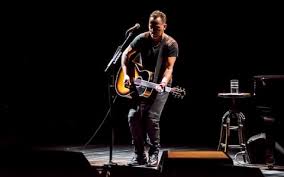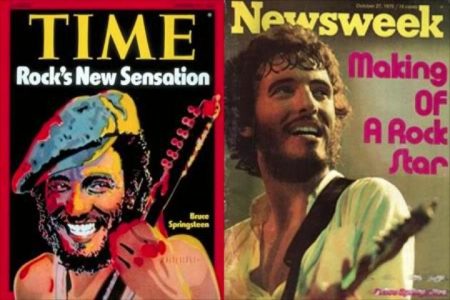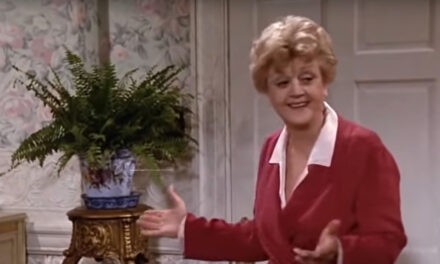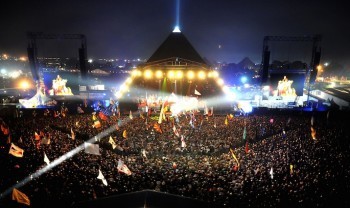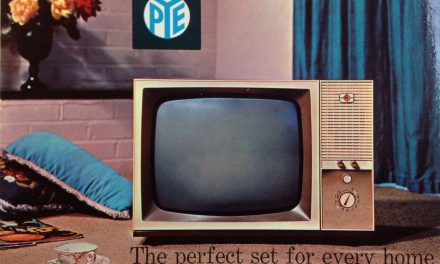I’ve never held an honest job in my entire life. I’ve never done any hard labor. I’ve never worked 9 to 5. I’ve never worked five days a week until right now. I don’t like it. (laughter) I’ve never seen the inside of a factory but it’s all I’ve ever written about. Standing before you is a man who has become wildly and absurdly successful writing about something he has had absolutely no personal experience. I made it all up. That’s how good I am. (laughter)
— Bruce Springsteen during his introduction to his first song,
‘Growing Up,’ in Springsteen on Broadway (2018)
As the above epigraph suggests, Bruce Springsteen acknowledges at the outset of Springsteen on Broadway that his lyrics contain a healthy dose of poetic license. He is aiming for something other than a concert in both this stage show and the follow-up Netflix special of the same name. It is equal parts conversation and confession, even becoming something of a sermon at the end where he integrates a short passage from the Lord’s Prayer, asks God to bless the audience, their families, and the people they love, before thanking them ‘for coming out tonight.’
Springsteen onstage comes across as he always has, only more so. He is the pope of working-class cool. His tone of witty self-depreciation throughout the show underscores the level of candor he is trying to achieve. He is clear from the beginning that Bruce Springsteen, the rock star, and Bruce Springsteen, the person, are two distinct albeit related creations. Even in recent interviews he has focused on the fact that ‘there is a big difference between what you see on stage and my daily existence… I want to be that guy myself very often’ (NPR). Examining this seeming paradox between person and persona emerges as the main focus of this one-of-a-kind performance.
Artists of all persuasions have long ago produced works that have served as tools of both self-discovery and self-realization. James Joyce began working on A Portrait of the Artist as a Young Man (1916) at 22 and published it when he was 34. It is a paradigmatic example. Joyce’s first novel is one of the best known of literally hundreds of existing Künstlerromans or narratives written by artists who don fictional garb to examine their growth and maturation in a coming of age story based on actual events. Rarely has an artist appeared in person as Springsteen does in this show to underscore the incongruities between the facts and fiction of his life in real time.
Suffice it to say that Springsteen on Broadway delivers an unexpected degree of self-disclosure and intimacy. Bruce Springsteen works hard to come across as a reliable narrator in both Springsteen on Broadway and its urtext, his 2016 autobiography entitled Born to Run, which he wrote intermittently over seven years all by himself. In both memoir and onstage, he reveals that ‘I come from a boardwalk town where almost everything is tinged with a bit of fraud. So am I. By twenty, no race-car-driving-rebel, I was a guitar player on the streets of Asbury Park and already a member in good standing among those who “lie” in service of the truth… artists, with a small “a”’ (xi).
Springsteen on Broadway (Netflix, 2018) Official Trailer (2:25)
Bruce Springsteen is telling an origin story about himself and the place where he grew up. Springsteen on Broadway has also been described as a ‘moment of reckoning’ where the allusion to James Joyce may not be as far-fetched as it first appears (Pareles A16). Joyce too was born to run from the holy trinity of home, church, and school, fleeing his cash-strapped home-life headed by a father who drank too much, and leaving behind the suffocating parochialism of Dublin at the turn of the 20th Century. From his early twenties onward, Joyce mostly lived in a kind self-imposed exile for the rest of his life in various European cities, primarily Trieste, Zurich, and Paris.
Bruce Springsteen similarly grew up in a poor, unstable family marked by emotional chaos. He may never have worked in a factory but he grew up in a tattered small-town Italian-Irish working class enclave where St. Rose of Lima Church sat literally down the street from his home. He explains how it held dominion over daily life in his community. He concludes in both his autobiography and Springsteen on Broadway, ‘once you’re a Catholic, you’re always a Catholic.’ (17). He also admits about his hometown of Freehold, New Jersey (NJ), that ‘this town, my town, would never leave me, and I would never completely leave it, but I would never live in Freehold again’ (116).
Bruce Springsteen has been telling stories onstage and playing music his whole adult life. His first paid gig was as part of a local garage band at the Elks Lodge in Freehold when he was only 15. He first performed in Asbury Park, NJ at the Upstage Club five years later in 1969. Less than 20 miles from Freehold on the Jersey Shore, this past-its-prime blue-collar resort town became Springsteen’s escape valve and artistic ground zero as he honed his skills in Asbury Park and on the road with a series of bands before being discovered by famed talent scout, John Hammond, and signed to Columbia Records by the likewise legendary A&R executive, Clive Davis, in 1972.
By his mid-twenties, Bruce Springsteen was not only a singer-songwriter and lead guitarist but a budding raconteur on stage punctuating his music with anecdotes about his life and how his experiences related to the many cover songs and growing number of original compositions he was playing. Now five decades into his career, Springsteen on Broadway, which was performed 236 times at the 939-seat Walter Kerr Theatre between 3 October 2017 and 15 December 2018, was hardly an anomaly in that the artist mixed talk with music. What was unique was the fact that the stories were front and center, while the songs played a supporting though integral role in the show. He in turn presents a portrait of himself as a person and an artist looking back upon his entire career from the perspective of an older man in his late sixties.
Netflix’s Springsteen on Broadway is the latest incarnation of an ongoing personal exploration that began onstage with those improvised remembrances between songs in such clubs as The Stone Pony in Asbury Park, Max’s in Kansas City, and The Roxy in West Hollywood throughout the 1970s. Springsteen grew more focused and deliberate in writing down and expanding those stories as he was turning 60 in 2009. The result of this deep and continuing self-examination over the last decade was, first, his 528-page autobiography, Born to Run, followed by the Broadway stage show, and concluding with the Netflix TV special.
Bruce Springsteen discusses writing his memoir on 1 September 2016 (1:48):
Netflix released this two-hour 33-minute streamable version of Springsteen on Broadway to its estimated 140 million worldwide subscribers early on Sunday morning (EST), December 16, just hours after the curtains closed on his last live stage show. This television special is an edited compilation of two extra performances filmed five months earlier on July 17 and 18 before invited private audiences (Paulson). It is directed by longtime collaborator, Thom Zimny, who has produced and edited over a dozen documentaries and short videos for Springsteen since 2003; and recently completed, Elvis Presley: The Searcher (2018) for HBO.
Thom Zimny on Directing Springsteen On Broadway (1:21):
Springsteen on Broadway is sui generis, an uncategorizable stage production and now a Netflix special. He is the unusual rock star who has never ingested recreational drugs or even drank a beer until he was 22. Playing music at an early age provided him with a stability that he never found at home and he concedes that he was reluctant to jeopardize the internal balance that music afforded him by introducing mind-altering substances into his system. He also confides in his memoir that he’s been in psychotherapy since 1983 and ‘slipped into a depression’ in 2010 that ‘lasted for a year and a half and devasted [him]’ (484). He eventually worked his way out of it, finding solace in family, work, ‘antidepression medication,’ and the process of writing his autobiography and stage show (485).
Springsteen on Broadway is thus a heartfelt and therapeutic audit of his life and career as well as a public declaration of his commitment as an artist to himself and his audience. Director Thom Zimny describes it as ‘an honest moment of confession’ whereby ‘so much is revealed’ by the camera ‘in the quiet and also the spaces of the rhythm of his voice and eyes.’ The visual iconography is designed to evoke Springsteen’s mental landscape as Heather Wolensky’s warehouse-like set is threadbare and Natasha Katz low-key lighting strategy often presents the singer-songwriter as a singular, luminous presence framed against a jet-black background.
Bruce Springsteen utilizes few props in this stage-to-screen adaptation. He plays an array of guitars and a baby grand piano. Sometimes he speaks directly into a microphone, other times as asides to the audience. Brian Ronan’s sound design captures this uneven naturalistic aural experience as if viewers were actually in the theater themselves. Springsteen too looks somewhat smaller, cut down to his 5’10” frame, much more accessible. His hair is close-cropped, as he is dressed in a black T-shirt and jeans, anchored by well-worn boots. ‘I chose my father’s voice,’ he proclaims early on. ‘I put on factory worker’s clothes because they were my father’s clothes.’
Springsteen on Broadway contains 15 different songs with ‘Born to Run’ reprised as a finale, comprising a set list of 16 total. They are carefully selected out of a catalog of approximately 320 recorded tunes painting the portrait of the artist as a young man ‘Growing Up,’ in the first half, followed by a second half that explicates his hard-won observations and beliefs on love and marriage, the promises and limitations of the American Dream, and the struggles he’s experienced over a half-century of adulthood living a musician’s life of purpose. ‘The one thing I miss about getting older is that blank page,’ he laments, ‘daring you to write on it.’
What is possible in looking back, however, is a deeper communion with the audience that Bruce Springsteen seeks during his introduction to ‘Dancing in the Dark.’
When I was a young man, I took my fun very seriously. And that’s what I pursue as my service and I still believe in it as such. This is what I’ve presented to you all these years as my long noisy prayer. My magic trick. I wanted to rock your very soul. And have you bring it home and pass it on. I wanted it to be sung and altered by you and your folks and your children, should they be interested. I wanted it to be something that you could call on when things were good and when things were not so good. That it might strengthen, help make sense of your story and your life the way it has strengthened me and helped me make sense of my life. You provided me with purpose, with meaning, and with a great, great amount of joy. I hope I’ve done that for you and I’ve been a good traveling companion.
In the music that follows this ardent and sincere declaration along with all of the other statements and stories he recounts, Springsteen’s stripped-down acoustic arrangements are stark, haunting, and bluesy, while his rough expressive voice resembles a guttural howl. His spoken-and-sung monologue is suspended only once when his wife of nearly 30 years, ‘[his] Jersey girl’ and fellow E Street Band member, Patti Scialfa, joins him onstage to publicly affirm their loving relationship with a pair of moving duets from the Tunnel of Love album, ‘Tougher Than the Rest’ and ‘Brilliant Disguise.’ Springsteen therefore opens up his personal life to the audience as never before, and unlike any other rock star who has preceded him.
What has always set Bruce Springsteen apart are his lyrics and the overall message about blue-collar America that they conveyed. The stories inside his songs steadfastly reflected the ordinary lives of everyday Americans, of whom he was one of the lucky ones. Heralded as the ‘future of rock and roll’ by Jon Landau, one-time music critic and later Springsteen’s manager, the rust-belt rocker landed on the cover of both Time and Newsweek on 27 October 1975. As he delineated in his 2012 SXSW (South by Southwest) keynote address and later his autobiography, his sound is a rich amalgam albeit derivative of Elvis and Dylan, the Beatles and the Rolling Stones, James Brown and Motown. ‘I knew I was never going to be Woodie Guthrie. I liked Elvis, and I liked the pink Cadillac too much. I like the simplicity, and the tossed-off temporary feeling of pop hits. I liked big, fucking noise. And in my own way, I liked the luxuries and comforts of being a star’ (Rolling Stone).
Bruce Springsteen achieved the American Dream by writing passionately and incisively about those quotidian concerns that he shared with fellow New Jerseyans during his boyhood up through today. His lyrics have brains and soul, muscle and heart. Springsteen on Broadway illustrates fifteen-times-over that his songs are the products of his humble origins and his personal experiences. He has chronicled a half-century of post-industrial enervation in the US as well as the aspirations and disillusionment of the working class over this period of time. He modeled James Brown’s example as the ‘hardest working man in show business,’ and carried on this R&B icon’s work ethic after his passing in 2006. As he declares in his introduction to ‘The Ghost of Tom Joad,’
I wanted to hear the whole American story. I wanted to know my story and your story. I felt I needed to understand as much of it as I could in order to understand myself. Who was I and where I came from and what that meant. What did it mean to my family? Where was I going? And where were we going together as a people? And what did it mean to be an American? And to be a part of this story in this place in this time. I wanted to be able to celebrate and honor its beauty, its power. I wanted to be a critical voice when that’s what the times called for. But most of all, more than anything else, I wanted to tell that story well to you. That was my young promise to myself.
The personal has always been political and cultural for Bruce Springsteen. Before the final benediction he delivers in Springsteen on Broadway, he acknowledges that present days ‘are also times when we’ve seen folks marching and in the highest offices of the land who want to speak to our darkest angels. Who want to call up the ugliest and most divisive ghosts of America’s past and they want to destroy the idea of an America for all.’ Springsteen remembers what it’s like to be on the outside looking in. That remains his perspective as an artist, even after all these years. His portrait today is multi-faceted and cross-platform; it’s written on paper, spoken and sung in person, and streamed digitally to millions. As with all lasting art, it is above all else a distillation of who he is and what he thinks and feels as a person.
Gary R. Edgerton is Professor of Creative Media and Entertainment at Butler University. He has published twelve books and more than eighty-five essays on a variety of television, film and culture topics in a wide assortment of books, scholarly journals, and encyclopedias. He also co-edits the Journal of Popular Film and Television.
Works Cited
Joyce, James. A Portrait of the Artist as a Young Man. New York: Penguin, 1992 (first published in New York by B.W. Huebsch in 1916).
NPR (National Public Radio): Fresh Air, 5 October 2016, Bruce Springsteen interviewed by Terry Gross, 44:15 minutes.
Pareles, Jon. ‘The Boss, Distilled for a New Stage on Broadway,’ New York Times. 1 October 2017: AR16-17.
Paulson, Michael. ‘Springsteen’s Show Is Headed to Netflix,’ New York Times. 19 July 2018: C3.
Rolling Stone. ‘Exclusive: The Complete Text of Bruce Springsteen’s SXSW Keynote Address [delivered 15 March 2012],’ Rolling Stone. 28 March 2012 at https://rollingstone.com/music/music-news/exclusive-the-complete-text-of-bruce-springsteens-sxsw-keynote-address-86379/.
Springsteen, Bruce. Born to Run. New York: Simon & Schuster, 2016.


